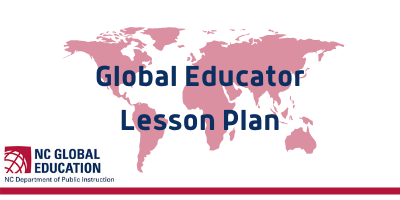GEDB Social Issues Within Our Worlds: Poverty (Lesson 3 of 4)

Overview
In this lesson students will make the connections between poverty and high death tolls in earthquakes. Students will understand that the effects of natural disasters are worse in impoverished places than in wealthy places. Students will compare and contrast the effects of an earthquake that hit Haiti to an earthquake that occurred in San Francisco. Students will examine graphs to obtain information in order to make the connections between poverty and high death tolls. Students will complete this activity by creating a diagram/poster/collage that demonstrates things that make the United States safer from earthquakes than in countries who are not as wealthy. This lesson was developed by Christina Hartzell as part of their completion of the North Carolina Global Educator Digital Badge program. This lesson plan has been vetted at the local and state level for standards alignment, Global Education focus, and content accuracy.
Lesson Plan
Description
In this lesson students will make the connections between poverty and high death tolls in earthquakes. Students will understand that the effects of natural disasters are worse in impoverished places than in wealthy places. Students will compare and contrast the effects of an earthquake that hit Haiti to an earthquake that occurred in San Francisco. Students will examine graphs to obtain information in order to make the connections between poverty and high death tolls. Students will complete this activity by creating a diagram/poster/collage that demonstrates things that make the United States safer from earthquakes than in countries who are not as wealthy.
Content
Student Engagement/Motivation
Students will investigate and discuss three different types of poverty listed below:
(definitions can be found by using the following link: http://www.tolerance.org/supplement/poverty-and-natural-disasters-exploring-connections-early-gr)
- poverty
- extreme poverty
- areas of concentrated poverty
Ask the students, "What kinds of things do you need in order to live?" (Write the items on the board, as students call them out.)
Ask students, "What do you know about earthquakes?" (Have a discussion about pictures students have seen and the destruction that earthquakes cause)
Have students locate Haiti on a Map to enhance visual learning (Map of Haiti)
Learning Targets and Criteria for Success
Learning Targets
- I can determine how poverty affects the impact of natural disasters.
- I can research how poverty differs from country to country.
- I can use what I’ve learned about poverty and natural disasters to teach others.
Criteria for Success
- I will make the connection between poverty and natural disasters by completing the worksheet, "Connections Between Poverty and High Death Tolls in Earthquakes".
- I will demonstrate my learning by creating a diagram/poster/collage of resources that make earthquakes in the United States safer than in poor countries.
Supplies/Resources
- Teaching Tolerance Lesson Plan
- Graph 1, Graph 2, Graph 3
- Handout
- Construction paper
- Old Magazines (brought in by students and teacher)
- Glue
- Internet access (to find pictures of earthquakes, locate Haiti, and/or pictures for collage)
Learning Tasks and Practice
Follow the instructional procedures for "Teaching Tolerance". You will need to divide the students into small groups and give each group a set of graphs (3).
*Students will need 2 - 30 minute sessions to complete their collage. 30 minutes of researching and printing/cutting out pictures, and 30 minutes of pasting and creating the final product.
Technological Engagement
- Google Earth (locate Haiti, San Francisco)
- Research natural disasters
- Images
Collecting and Documenting Evidence of Learning
Evidence of learning:
- Completion of "Connections Between Poverty and High Death Tolls in Earthquakes"
- Summary sentences created on graphs
- Final project of creating a visual representation of learning
Student Self-Reflection and Action Steps
Students can reflect within this lesson by creating summary sentences about the graphs they are reading/studying. They are also given the opportunity to have small group, whole group, and teacher lead discussions on the topic. Students are able to conduct their own research in order to enhance their learning. Students will complete a project that demonstrates their individual thinking about resources that the United States has that other countries may not. Students can continue their learning and knowledge base by completing some of the activities listed in the "Extended Learning Opportunities" section of this lesson plan.
Feedback/Instructional Adjustments
- Students will need an understanding of how to read graphs
- Prepare materials ahead of time (make copies of graphs)
- Google imagines of the 1989 San Francisco Earthquake and the 2010 Haiti Earthquake
- More time may be needed for struggling students
Extended Learning Opportunities
- Students can research other countries that are similar to Haiti. Students can discover how these countries are affected by natural disasters and the toll it takes within their society.
- Locally - organize a canned food drive or collect pennies to donate to a homeless shelter
- Nationally - contact the Red Cross to see where help is needed
- BOTH - Create a project to teach people in the community about how poverty makes the effects of natural disasters worse in other countries
Teacher Reflection of Learning
This lesson truly allowed students to gain firsthand knowledge of the world beyond the United States. They learned how other countries are effected by natural disasters and that help is not readily available as it is in the United States. The students were able to study the affected earthquakes have in countries that are similar to Haiti. This lesson motivated my students to learn more about natural disaster relief programs and how they can take action and help people around the world. I look forward to expanding on this lesson by creating a variety of lessons using different types of disasters within different countries.